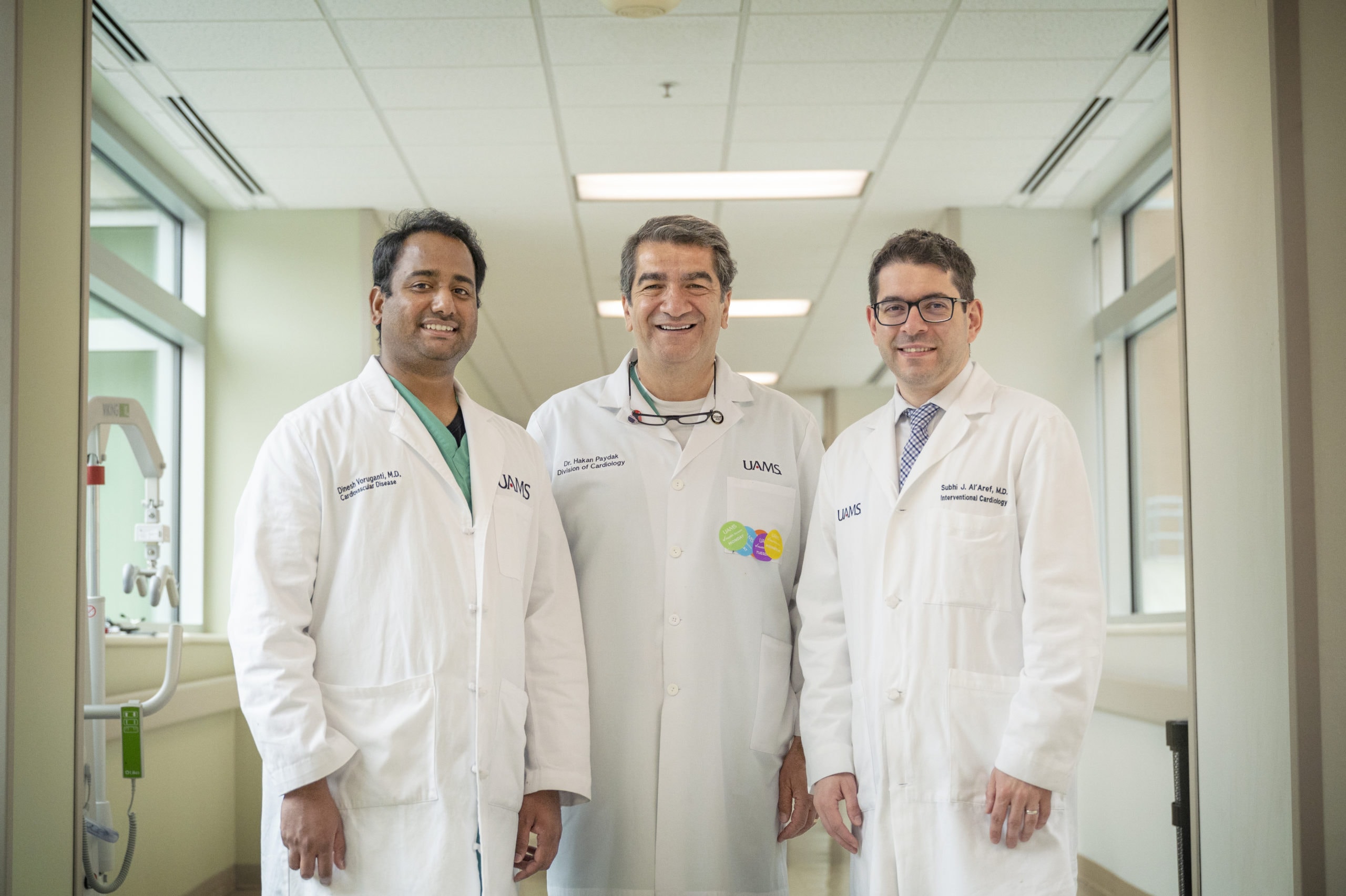View Larger Image

Dinesh Vorungati, left, with Hakan Paydak, M.D., center, and Subhi Al'Aref, M.D.
Image by Evan Lewis
Recipients of Annual Cardiology Awards Named
| The recipients of this year’s annual Cardiology Research Awards are Subhi Al’Aref, M.D., Dinesh Vorungati, M.D., and Hakan Paydak, M.D.
John Paul Mounsey, M.D., Ph.D., chief of the Cardiology Division in the College of Medicine, congratulated Al’Aref for winning the Outstanding Researcher award, Vorungati for receiving the Emerging Researcher award and Paydak for being the recipient of the James D. Marsh award, which is named after the former chief of the Department of Internal Medicine.
All the awards come with $1,000 cash. The Marsh award also comes with a plaque that hangs in the Cardiology Division offices.
Nominations came from faculty, staff, fellows, residents and others associated with the Cardiology Division. The Cardiology Research Committee tabulates the nominations and declares the winners.
Al’Aref, a cardiologist, is interested in combining interventional and imaging cardiology, both for clinical and research purposes. He is dedicated to translational research, which takes scientific findings from the lab and “translates” them to have real-word impacts. He also researches artificial intelligence and how it could be used within clinical practices.
He has been researching the prognostic value of coronary atherosclerosis as seen on a coronary computed tomography angiogram, studying the value of obstructive and non-obstructive coronary artery disease (CAD) across numerous cohorts and populations, and analyzing the importance of non-obstructive CAD specifically in women, since stress testing in women tends to be less accurate than in men for the evaluation of the disease.
Voruganti, a clinical researcher who conducts clinical outcomes research, focuses predominantly on cardiac arrhythmias and heart failure. He conducts research using the National Inpatient Sample, the largest national database of inpatient and outpatient hospitalizations; the National Readmission Database; and the National Ambulatory Surgical Sample (NASS), looking at inpatient outcomes among patients with atrial fibrillation/atrial flutter and ventricular tachycardia.
“Studying the national database enables me to study about 10 million to 100 million hospitalizations all over the United States,” he said. “I plan to continue expanding research to cardiac ablation and device procedures and outcomes.”
Paydak, a cardiologist who directs the Clinic Cardiac Electrophysiology Lab and Fellowship Program at UAMS, credits teamwork with enabling him to publish prolifically.
“UAMS has been a great atmosphere for me to do clinical research over the last 12 years,” he said. “During this amazing journey, I have had 60 peer-reviewed articles and two book chapters published, with the guidance of great research mentors like Dr. Jay Mehta and contributions of numerous junior faculty, fellows, residents and medical students.”
Paydak called the Marsh Award “the icing on the cake.”
He said the division’s main manuscripts have focused on database-driven, large-population studies and were published in top cardiology journals, but the division has also published many studies based solely on the UAMS patient database.
Future electrophysiology research efforts will use artificial intelligence and MRI technology to guide the placement of the left ventricular lead to the best spot in the heart in cardiac re-synchronization therapy, he said. He noted that the first patient has been recruited for a related National Institutes of Health-sponsored study led by Al’Aref.